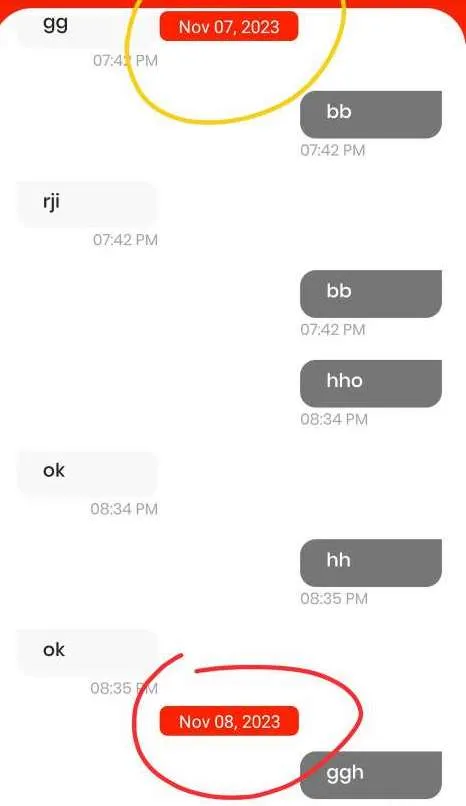我使用storyboards在Interface Builder中创建了一个带有静态单元格和多个不同部分的UITableView。
我的问题是,我正在尝试以几种不同的语言设置我的应用程序。 为此,我需要能够以某种方式更改UITableView的部分标题。
请有人能帮我吗? 理想情况下,我想使用IBOutlets来解决这个问题,但我怀疑在这种情况下甚至都不可能。 任何建议和建议都将不胜感激。
我使用storyboards在Interface Builder中创建了一个带有静态单元格和多个不同部分的UITableView。
我的问题是,我正在尝试以几种不同的语言设置我的应用程序。 为此,我需要能够以某种方式更改UITableView的部分标题。
请有人能帮我吗? 理想情况下,我想使用IBOutlets来解决这个问题,但我怀疑在这种情况下甚至都不可能。 任何建议和建议都将不胜感激。
一旦您将UITableView的delegate和datasource连接到控制器上,您可以执行以下操作:
- (NSString *)tableView:(UITableView *)tableView titleForHeaderInSection:(NSInteger)section {
NSString *sectionName;
switch (section) {
case 0:
sectionName = NSLocalizedString(@"mySectionName", @"mySectionName");
break;
case 1:
sectionName = NSLocalizedString(@"myOtherSectionName", @"myOtherSectionName");
break;
// ...
default:
sectionName = @"";
break;
}
return sectionName;
}
func tableView(_ tableView: UITableView, titleForHeaderInSection section: Int) -> String? {
let sectionName: String
switch section {
case 0:
sectionName = NSLocalizedString("mySectionName", comment: "mySectionName")
case 1:
sectionName = NSLocalizedString("myOtherSectionName", comment: "myOtherSectionName")
// ...
default:
sectionName = ""
}
return sectionName
}
numberOfSectionsInTableView:tableView: 方法才能让它被调用。 - drewishnumberOfSectionsInTableView:tableView:。 - wcochran如果您正在使用Swift编写代码,它可能看起来像这样的示例
func tableView(tableView: UITableView, titleForHeaderInSection section: Int) -> String?
{
switch section
{
case 0:
return "Apple Devices"
case 1:
return "Samsung Devices"
default:
return "Other Devices"
}
}
使用 UITableViewDataSource 方法。
- (NSString *)tableView:(UITableView *)tableView titleForHeaderInSection:(NSInteger)section
titleForHeaderInSection 是 UITableView 的一个委托方法,用于设置 section 的标题文本。使用如下代码编写:
- (NSString *)tableView:(UITableView *)tableView titleForHeaderInSection:(NSInteger)section{
return @"Hello World";
}
- (UIView *)tableView:(UITableView *)tableView viewForHeaderInSection:(NSInteger)section方法,则-(NSString *)tableView:titleForHeaderInSection:方法不会被UITableView调用;其他答案都没有问题,但这个答案提供了一种非编程解决方案,适用于静态表格的情况。好处是可以使用故事板来组织本地化内容。可以继续通过Xcode导出XLIFF文件进行本地化。Xcode 9还有几个新工具使本地化更加容易。
(原始文本)
我有一个类似的需求。在我的Main.storyboard(Base)中有一个带有静态单元格的静态表格。要使用.string文件对部分标题进行本地化,例如Main.strings(German),只需在故事板中选择该部分并注意对象ID即可。
之后,进入您的字符串文件,以我的情况为例,是Main.strings(German),并插入翻译,例如:
"MLo-jM-tSN.headerTitle" = "Localized section title";
- (CGFloat)tableView:(UITableView *)tableView heightForHeaderInSection:(NSInteger)section
{
return 45.0f;
//set height according to row or section , whatever you want to do!
}
设置部分标签文本。
- (UIView *)tableView:(UITableView *)tableView viewForHeaderInSection:(NSInteger)section
{
UIView *sectionHeaderView;
sectionHeaderView = [[UIView alloc] initWithFrame:
CGRectMake(0, 0, tableView.frame.size.width, 120.0)];
sectionHeaderView.backgroundColor = kColor(61, 201, 247);
UILabel *headerLabel = [[UILabel alloc] initWithFrame:
CGRectMake(sectionHeaderView.frame.origin.x,sectionHeaderView.frame.origin.y - 44, sectionHeaderView.frame.size.width, sectionHeaderView.frame.size.height)];
headerLabel.backgroundColor = [UIColor clearColor];
[headerLabel setTextColor:kColor(255, 255, 255)];
headerLabel.textAlignment = NSTextAlignmentCenter;
[headerLabel setFont:kFont(20)];
[sectionHeaderView addSubview:headerLabel];
switch (section) {
case 0:
headerLabel.text = @"Section 1";
return sectionHeaderView;
break;
case 1:
headerLabel.text = @"Section 2";
return sectionHeaderView;
break;
case 2:
headerLabel.text = @"Section 3";
return sectionHeaderView;
break;
default:
break;
}
return sectionHeaderView;
}
我不知道以前的UITableView协议版本,但在iOS 9中,func tableView(tableView: UITableView, titleForHeaderInSection section: Int) -> String?是UITableViewDataSource协议的一部分。
class ViewController: UIViewController {
@IBOutlet weak var tableView: UITableView!
override func viewDidLoad() {
super.viewDidLoad()
tableView.dataSource = self
}
}
extension ViewController: UITableViewDataSource {
func tableView(tableView: UITableView, titleForHeaderInSection section: Int) -> String? {
return "Section name"
}
}
在填充表格数据时,您不需要声明delegate。
 [![在这里输入图片描述][2]][2]带有自定义设计的分区设计的tableView
[![在这里输入图片描述][2]][2]带有自定义设计的分区设计的tableView
func tableView(_ tableView: UITableView, viewForHeaderInSection section: Int) -> UIView? {
let width = width(text: myArr[section].date, height: 30)
let headerLabel:UILabel = UILabel.init(frame: CGRect(x: self.view.frame.width / 2 - ((width + 30) / 2), y: 0, width: width + 30, height: 30))
headerLabel.text = myArr[section].date
headerLabel.textColor = UIColor.white
headerLabel.backgroundColor = UIColor.AppRed
headerLabel.textAlignment = .center
headerLabel.layer.masksToBounds = true
headerLabel.layer.cornerRadius = 10
let headerView:UIView = UIView.init(frame: CGRect(x: 0 , y: 0, width: self.view.frame.size.width, height: 40))
headerView.backgroundColor = UIColor.clear
headerView.addSubview(headerLabel)
headerView.layer.cornerRadius = 10
return headerView
}
func width(text: String, height: CGFloat) -> CGFloat {
let attributes: [NSAttributedString.Key: Any] = [
.font: UIFont.systemFont(ofSize: 17)
]
let attributedText = NSAttributedString(string: text, attributes: attributes)
let constraintBox = CGSize(width: .greatestFiniteMagnitude, height: height)
let textWidth = attributedText.boundingRect(with: constraintBox, options: [.usesLineFragmentOrigin, .usesFontLeading], context: nil).width.rounded(.up)
return textWidth
}